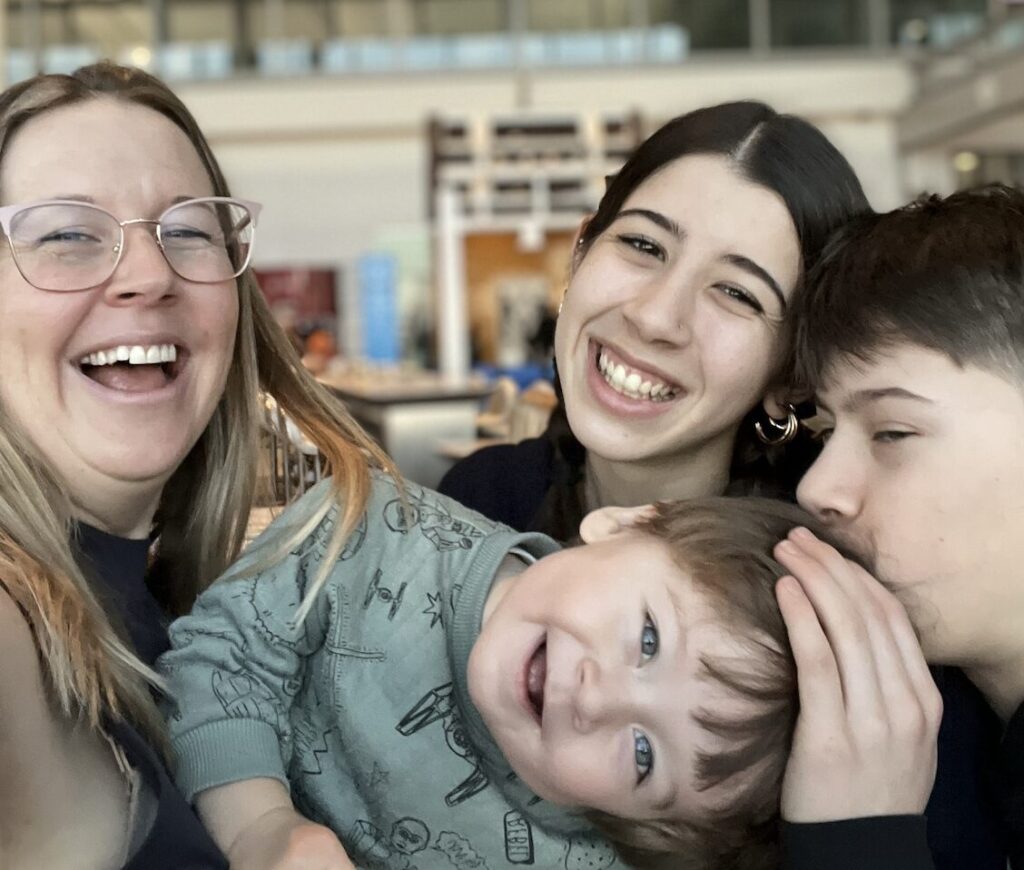Kids love sharing stories, secrets and snacks with their friends—but sometimes they share more than that. Here’s what to know about identifying and treating lice, as well as how to prevent its return.
Back-to-school signals the end of summer fun with those first days spent catching up with friends and sharing summer experiences. Sometimes our kids share something else—lice!
Lice infestations peak in September (it's actually Head Lice Prevention Month) when school children return from summer camps and activities where there has been close contact. Lice are tiny, wingless, parasitic insects. They are not dangerous and they don’t spread diseases. They are a nuisance for kids and an annoyance for parents, but they're especially concerning for schools because they can affect many kids quickly.
With this in mind, we talked to Shawnda Walker, lice expert and owner of dedicated lice salon Nitwits in Toronto, to get the skinny on this annoying problem.
What You Need to Know About Treating Lice
Lice are not a sign of poor hygiene. No socioeconomic class, age, hair type or hair length is immune. Lice can’t jump or fly. They are spread primarily through hair-to-hair contact, but they can also spread when personal items are shared (like hats, towels, headphones and hair accessories), however this is much less likely.
Some schools do routine lice checks in September, either using commercial services or a group of informed and helpful parents (many with first-hand experience!). If your school doesn’t do lice checks, one of the first clues your child may be infected is head-scratching or complaints of a tickling feeling on the scalp. Looking more closely on the scalp—ideally in natural light. You may be able to see some sesame-seed-sized, flat insects. They move fast and often scurry away behind the ears, neckline and top of the scalp where they feed on blood drawn from skin.
What’s more noticeable are the fixed, little eggs (called “nits”) that are brownish in colour, about the size of a grain of sand and are stubbornly attached to individual hair shafts. These eggs hatch within one to two weeks of being laid as baby “nymphs” and then after one to two weeks become adult lice. If untreated, the cycle repeats every three weeks.
How to Get Rid of Lice
GET YOUR SELF A GOOD LICE COMB. THE NIT FREE TERMINATOR IS THE ONE PROFESSIONALS USE AND MAKES ANY OVER THE COUNTER PRODUCT (that studies have proven them to be less effective these days) MORE EFFECTIVE
You can consult your pharmacist on hair products that are safe and effective, but many lice strains are resistant to over-the-counter treatment (today's lice are sometimes called “super lice”). All treatments require careful combing of wet, conditioned hair with a fine-toothed lice comb to remove nits. Here’s how:
- Get yourself a good lice comb. (Walker recommends the Nit-Free Terminator, as it's the one professionals use and it helps to make every product on the market more effective.)
- Place a towel around your child’s shoulders and sit them in good, natural light.
- Carefully comb through the hair in sections. Work systematically around the head, focusing on the hair closer to the scalp, behind the ears and at the back of the neck. The comb must always be dragging along the scalp.
- After each pass, wipe the comb on a clean white towel or paper towel so the nits and lice are easy to see. Alternatively, you can “fan” the comb out in a bowl of water—this means dragging your nail or the tip of your finger along the teeth of the comb so you dislodge anything that gets stuck—so you can clearly see what you're pulling out of your child's hair. Keep combing until there are no more nits or lice on the comb.
- Comb thoroughly every three days for three weeks.
- Repeat treatment in seven to 10 days (or according to product instructions) to kill newly hatched nits.
Next Steps for Treating Lice (and Getting a Handle on Prevention!)
Your child does not need to see a doctor to be diagnosed with lice unless they are under two years old, have allergies or if the treatment selected doesn’t work (this is common when kitchen remedies like mayonnaise or cooking oils are used in an attempt to suffocate lice), or if redness, crusting or pus arise, which may signify a bacterial infection requiring antibiotics. Oral medications are only rarely used when needed to treat very resistant lice.
Public health departments and some schools no longer support a “no nit” return to school policy. Once treated with an effective product and properly combed, children can return to school the next day with sensible precautions and education about combing and maintenance. To prevent a re-infestation consider the following:
- Review risk behaviours with your kids. Keep hair tied up in buns or braids for at least a few months, as your child's scalp will carry lice pheromones and this is the most likely re-infestation timeline.
- Consider investing in a good quality mint spray as a lice deterrent.
- Monitor symptoms in household members and other close contacts.
- Wash hair items, clothing and linens on hot cycles (luckily pets can’t catch lice or continue to pass them around).
- Vacuuming carpets and upholstered furniture can help, but lice don’t survive long off humans (about three days) so don’t spend too much time, effort or money on your home environment.
The key to successful lice removal is patience. Following these guidelines will help keep lice out of your hair!
Originally published in ParentsCanada magazine, August/September 2016. Photo by iStockphoto.










